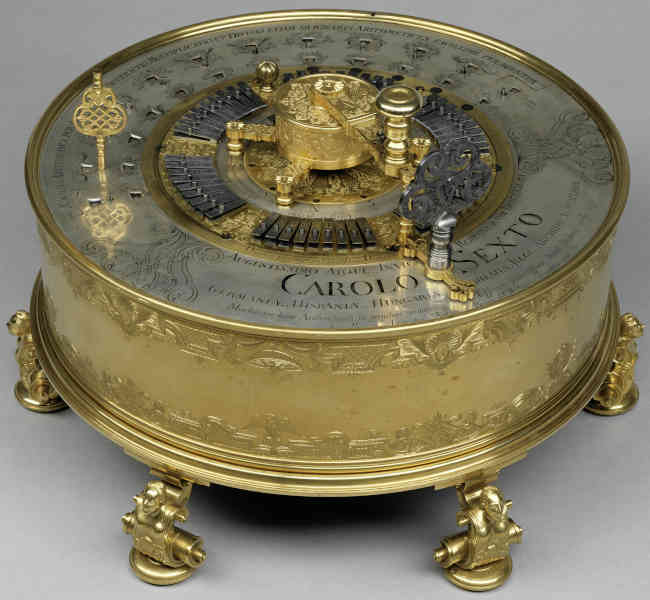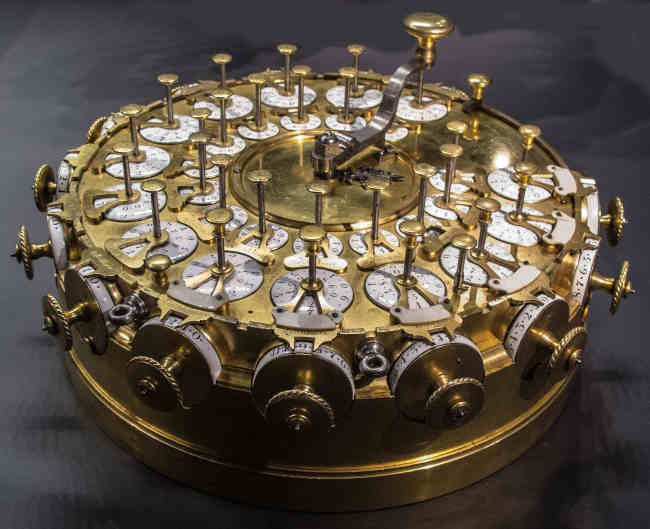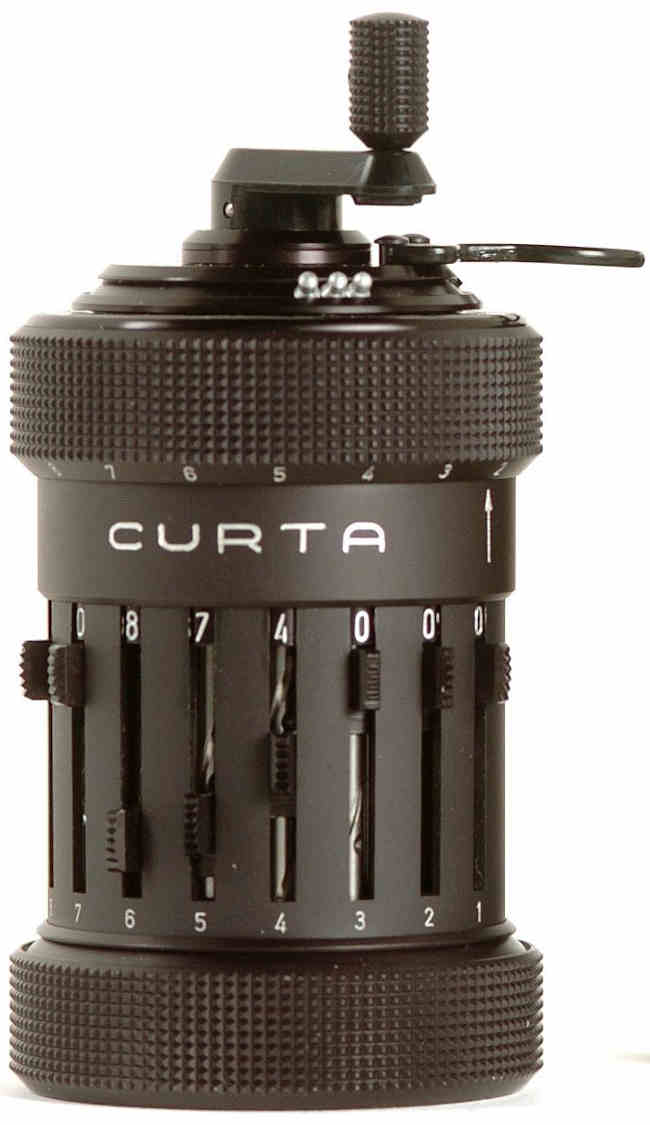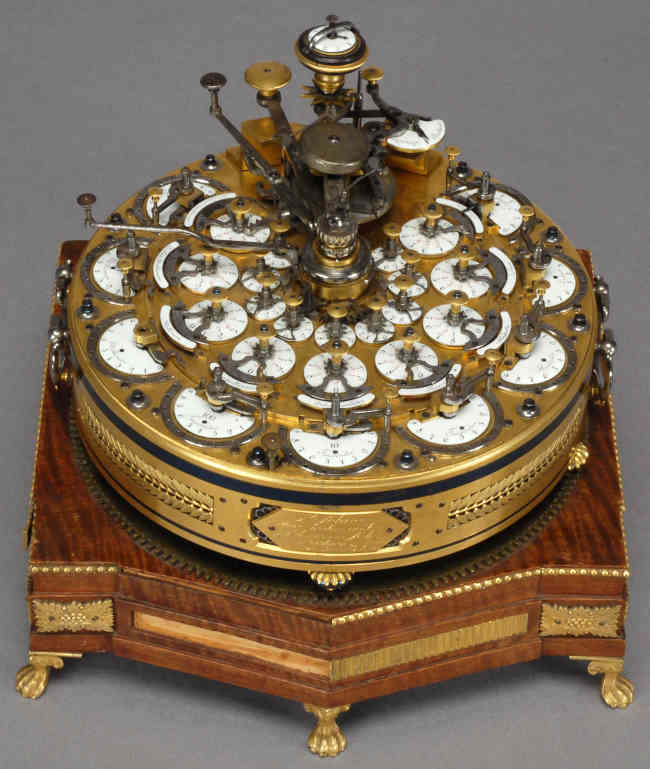
The design of present-day electronic computers is usually not very appealing, quite in contrast to numerous magnificent mechanical calculating machines from earlier times. Today’s devices are mass-produced; in the past, they were often one-of-kind objects and true works of art. Their creators were usually clockmakers. Historical automatons and robots also count as masterpieces; see my previous posts Superb Historical Robots and The World’s Most Magnificent Historical Automatons.
The examples described below are all from Europe. They are taken from the books Meilensteine der Rechentechnik, De Gruyter Oldenbourg, Berlin/Boston, 3rd edition, and Milestones in Analog and Digital Computing, Springer Nature Switzerland AG, Cham, 3rd edition 2020, 2 volumes.
In 1727, Anton Braun manufactured a great cylindrical pinwheel calculating machine (see Fig. 1).

Credit: Kunsthistorisches Museum Vienna, KHM Museum Association
One of the most beautiful digital calculating instruments is the stepped drum machine by Johann Helfrich Müller, built in 1784 (see Fig. 2).

Credit: Hessisches Landesmuseum, Darmstadt
In 1796, Johann Jacob Sauter created a pinwheel machine that performs all four basic arithmetic operations (see Fig. 3).
The tiny Curta (see Fig. 4) is considered the world’s smallest mechanical calculating machine and a technical marvel. It was mass-produced from 1948 to 1971.

Credit: Sven Beham, Liechtensteinisches Landesmuseum, Vaduz
Herbert Bruderer is a retired lecturer in didactics of computer science at ETH Zurich. More recently, he has been an historian of technology. bruderer@retired.ethz.ch, herbert.bruderer@bluewin.




Join the Discussion (0)
Become a Member or Sign In to Post a Comment